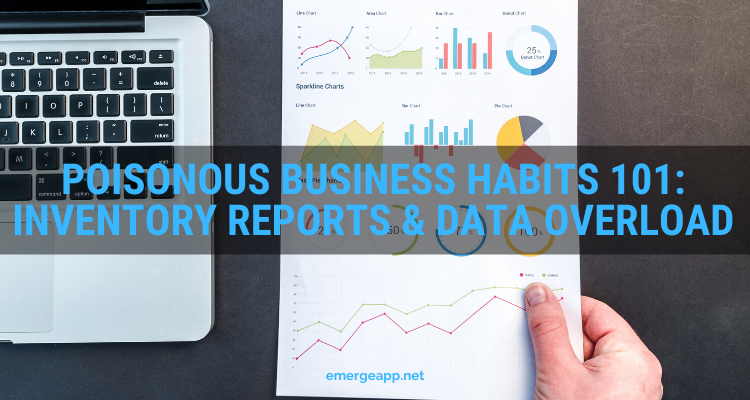Poisonous Business Habits 101: Inventory Reports and Data Overload

Introduction
I know what it’s like when you’re faced with high-pressure delivery deadlines or overwhelmed with incoming stock. There’s a common tendency for employees to either track nothing or everything.
Both are fatal to the survival of the company if left untreated. During my time as a consultant for many trading and distribution companies, the large majority of cases I’ve seen were from the latter.
Generally, it is unwise to minutely micromanage your inventory all the time.
In fact, the more transactions you do, the more impossible it becomes. It is thus important to know where to draw the line to achieve the balance your company needs to maximise efficiency.
Let’s talk about some keeping short, concise reports and how to avoid collecting too much data.
Inventory Reports: Time is of the Essence
The essential question here to ask is: when does tracking inventory become obsessive over-tracking?
The quick answer is that when you realise that it is taking too much time! For example, such that you have to compromise other vital aspects of your business.
Regardless of the scale of your business, time is a limited resource that businesses cannot afford to lose.
If you find yourself (or your team) investing weeks when a job should take days, chances are that you’re over-tracking.
Take a hard look at the stocktaking process. More often than not you’ll realise that the essential information you frequently need does not extend to more than a couple of categories.
Do short but frequent reports for this information, but once done move on to the next task.
If you find yourself needing more detailed information, a detailed stocktake should suffice once every three or six months.
Here’s the Game Plan: Avoid Too Much Data
Having data is essential to run your inventory operations. But too much data can be harmful and can delay your deadlines.
The game plan here is to cut loose the proverbial fat and keep only the relevant data that you’ll need frequently.
Keep your reports easy to read and highlight the information that requires your immediate attention.
Here are some questions you can use to reflect on the relevance of a particular data set
- How much time do I need to spend if I need to track this variable?
- How does it help me make better decisions for better sales & profits?
- Can a software system help me better track this data point?
- How can I streamline these efforts into my operational flow so the reports can be generated with minimum effort?
Ideally, a relevant inventory report should be no larger than an A4 or US Letter sheet of paper that is organised neatly and clearly.
Some free templates for inventory reports can be found here.
The data that is relevant to each business can be different and/or unique, depending on the industry.
Some common data points that are relevant to businesses are:
- Category
- Sub-category
- Brands
- Variants such as colour and size
- Best and worst selling product
- Best and worse product margin
- Shorter or longer sales or payment cycle
- Better or worse sales channel
Conclusion
Find out what information your business really needs, and stay focussed on those data points.
You’ll find that a lot of time will be freed up for better use such as ramping up digital marketing activities or keeping in touch with customers.
To keep your business fast, light and trim, consider using software such as EMERGE App that allows you to leverage on time and manpower to minimise creating and maintaining inventory reports.
Adopting healthy habits such as making bite-sized reports and avoiding over-tracking will go a long way in ensuring success for your company!





